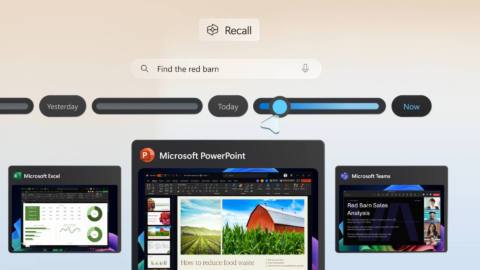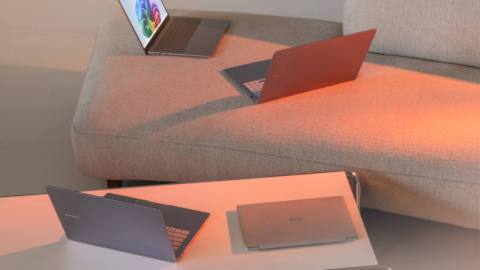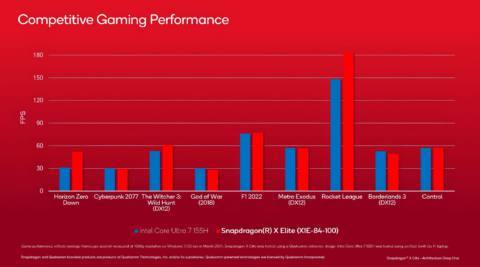What is it? The third game in the legendary space RTS series.
Release date May 13, 2024
Expect to pay £50/$60
Developer Blackbird Interactive
Publisher Gearbox Publishing
Reviewed on RTX 4090, Intel i9-13900k, 32GB RAM
Steam Deck Playable
Link Official site
The sight of Homeworld 3's sleek, indomitable mothership preparing to jet off into the unknown, accompanied by radio chatter and a moody score, feels like a homecoming. For newcomers, it's a striking scene; for veterans, it calls to mind the original mothership getting ready to leave Kharak—the beginning of one of the best strategy games ever created. It's enough to make one all tingly.
Homeworld 3 wants to remind you of its legacy a lot, especially in the campaign. After the events of Homeworld 2, Karan S'jet, the mothership's navigator, was sent on a mission to deal with a looming crisis, but she never returned. 20 years later her protege, Imogen S'jet, is following in her footsteps, with a new mothership and a new fleet that must strike out on their own, once again without support.
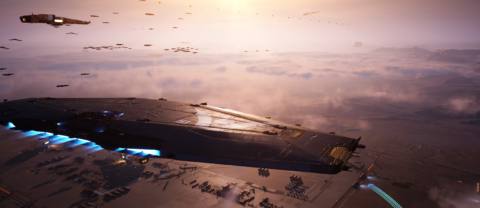
But where the original Homeworld often took a minimalist approach—from its narrative to its map design—Homeworld 3 is comparatively busier, with maps full of debris and terrain, and a story that constantly wants you to take a break from the fun stuff so you can listen to boring conversations in hideous cutscenes that look ripped from a bad '90s sci-fi game. The plot is mostly forgettable nonsense and I confess I checked out pretty quickly. The good news, though, is that the missions are largely brilliant.
Each of them puts the fleet in a new kind of peril, and there are some real doozies. You'll be hiding from enemies in nebulae; commandeering gargantuan, monolithic space complexes; setting up elaborate blockades, using turrets and mines to create corridors of death; and sabotaging factories in kamikaze strikes. I even kinda enjoyed the return of another 'avoid the asteroids' slog, because nostalgia has poisoned my brain.
The original Homeworld felt revolutionary thanks to its truly 3D battles, but Homeworld 3 makes you appreciate the cosmic conflicts so much more thanks to space terrain. Every single mission is laden with screen-filling structures and asteroids, creating defensible positions, chokepoints and ambush spots. How you approach a fight matters so much more because, while you have this complete freedom of movement, you also have maps that give you both advantages and limitations.
Space jam
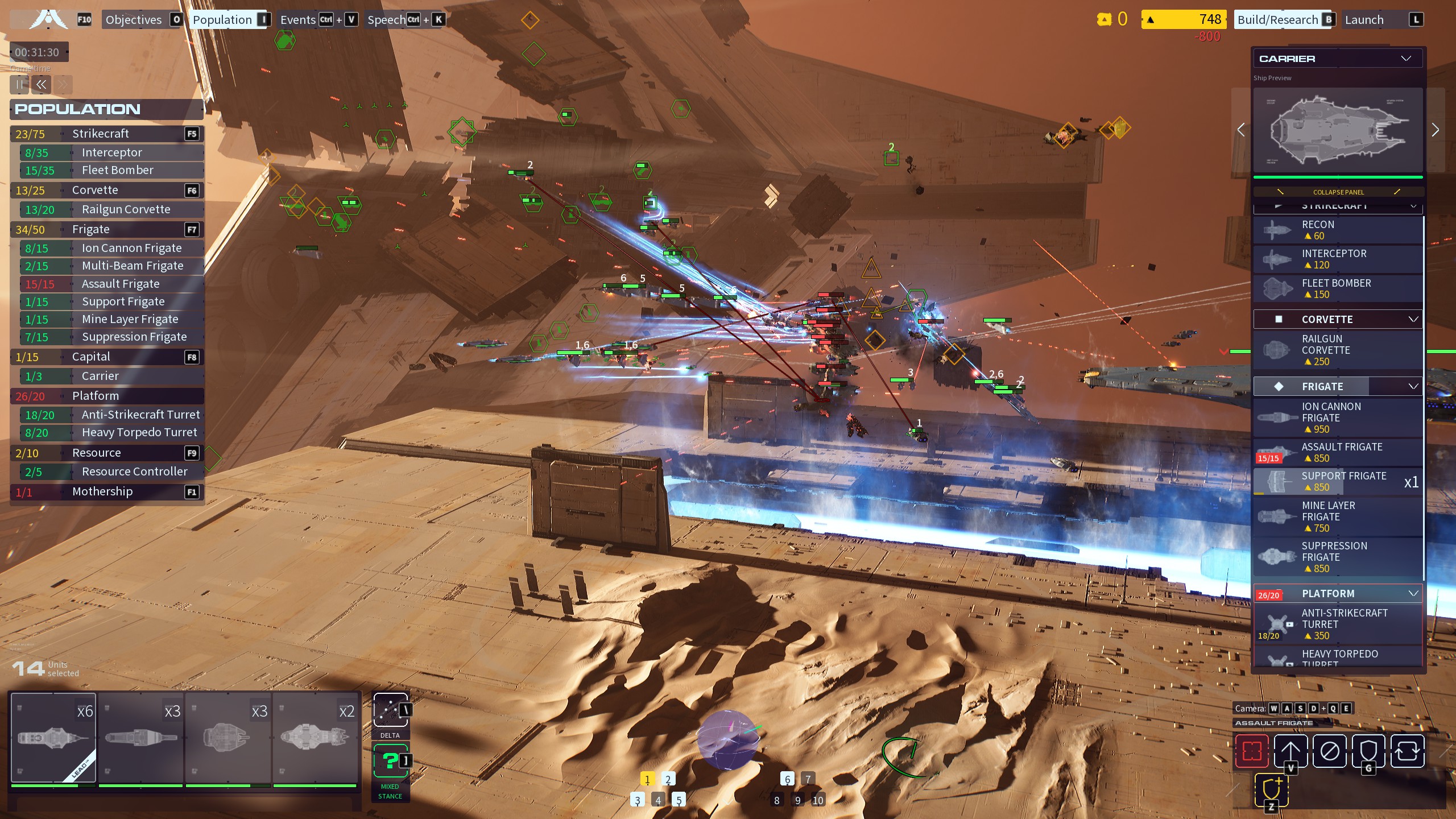
In a later mission, for example, I had to take out three battlecruisers—the game's beefiest boys—at the other end of the map. They were in a strong position, hovering over the top of a huge factory surrounded by turrets. Going in head-on or coming in from above would have given them plenty of time to batter me and take out most of my close-range ships. But that elevated position also gave me an opportunity.
It forces you to experiment and figure out a plan of attack that’s more than just wondering what ships you’ll bring into the battle.
I sent my fleet in low towards the bottom of the structure, out of reach of the enemy defences. Then, while the bulk of my fleet slowly ascended, I sent in cloaked bombers—every ship has a special ability that you can activate, once researched—ahead of them, which managed to swiftly take out several turrets. So when my frigates and destroyers appeared, they were able to get stuck into the battlecruisers without distractions. It forces you to experiment and figure out a plan of attack that's more than just wondering what ships you'll bring into the battle.
The complexity of the maps does make it harder to control your fleet, but I found the default control scheme to be mostly up to the task of managing these tricky 3D battles. It's easy to hop around the massive maps and focus on specific ships and groups, the attack move order means you can keep up the aggression constantly, and being able to select groups of enemies to attack—letting the AI prioritise targets—gives you space to deal with the big picture stuff. Thanks to the pair of preset control schemes and the option to rebind nearly everything, you should be able to find your sweet spot after a bit of tinkering.

In some ways, the terrain actually makes it easier to navigate space. Landmarks help you make sense of the scale of the maps so much better than the endless void, and I usually found myself using terrain when I was setting destinations and waypoints. That said, there are still some quirks, like ships deciding to hover underneath a platform instead of on top of it, or the way that large groups will spread out when you send them to a specific location, rather than all of them trying to get as close as possible to the location you've marked. Pathfinding is pretty wonky at times, too, necessitating the creation of a chain of waypoints if you want to keep your fleet's movements precise.

I enjoyed a smooth experience during my trip through space, with only the most titanic battles making much of a difference, but I also have a monster of a rig. Our Hardware Writer Nick Evenson has a full performance analysis, but here's his quick summary:
“Homeworld 3 is mostly limited by the CPU, though you'll still need a decent graphics card if you want to play it at 2160p with maximum quality settings. No matter what hardware you have, don't expect high frame rates, as even top-end stuff will eventually grind down to below 60 fps in heavy battles.”
I must admit I would have liked some maps that were just set in deep space, without all of these accoutrements, though. Full 3D movement already gives you plenty to deal with, and I miss the purity of its predecessors' take on space combat. Sometimes a bunch of ships dancing around each other and trying to score a killing blow is enough. That was the magic of Homeworld—this elegant balance of complexity and simplicity—and it can sometimes feel like Homeworld 3 is just trying too hard.
While every mission has a distinct vibe, unique objectives and a fresh layout, your fleet always persists. Whenever you start a mission, everything you've built in the previous one comes with you. If you absolutely kicked ass in the last one, you're going to be off to a better start in the next one. But the pace of the missions means that you usually still have time to build up before things heat up. What's disappointing, though, is the lack of player control over when a mission ends. Only one mission lets you select when you hit the hyperspace button and leave. The rest of them just chuck you into the next one the moment you complete the main objective. This means you have no time to mop up the remaining salvage or resources, or replace any ships that you lost in the final battle.
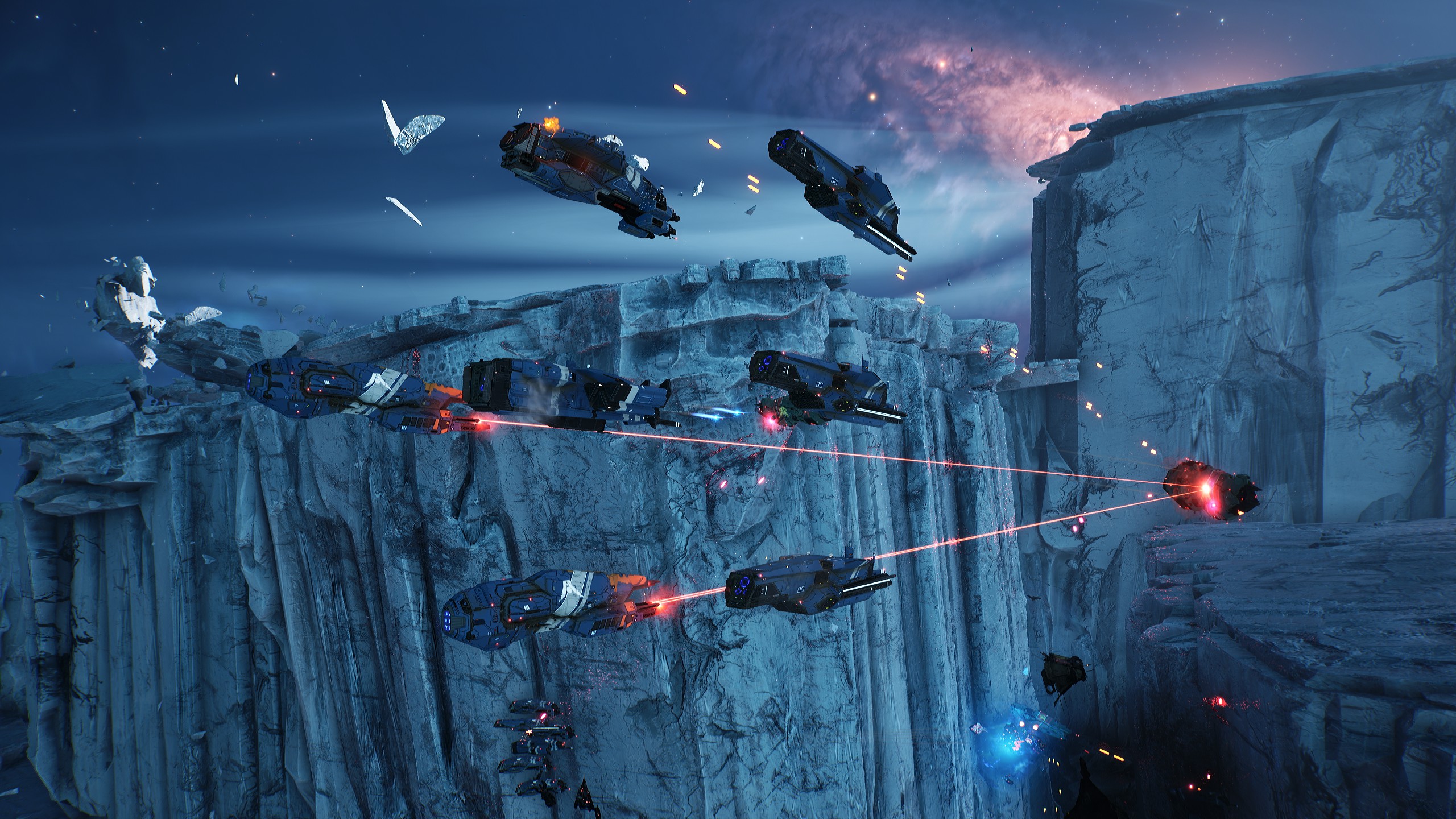
And I really could have done with a bit of time to replenish my forces because, oh boy, things blow up quickly in Homeworld 3. Even with the HP buff BBI has given ships since the demo, most of them still can't take much of a beating. Every ship just feels like it's one class lower than its older counterpart. When you first start fielding capital ships in Homeworld 1, they feel like monsters, but in Homeworld 3 they're more comparable with corvettes and end up requiring a lot more babysitting. Support frigates help alleviate this with their powerful life-giving beams, but once they get taken out you're going to be looking at a lot of ship debris.
Fragile though they may be, most vessels excel in their given roles, and when you're building groups for specific tasks and then flinging them into kinetic battles amid stunning stellar backdrops, it's a joy to watch them work. Using the formation system to turn groups of torpedo frigates into orbs of death proves to be a particular delight. As is watching a lumbering battlecruiser slowly coming in between enemy multi-beam frigates and your precious close-range ion frigates, taking most of the heat and shrugging off laser strike after laser strike—a giant piece of mobile cover bristling with turrets.
It took me around 15 hours to finish up the campaign, making it a bit more brisk than its predecessors. But I doubt I'll play it again. Despite the quality of the missions, the heavily scripted AI means a second outing just isn't going to offer much. Even when the AI is being aggressive, it never feels reactive, instead feeling like it's just following a schedule. It can put up a fight, sure, but only when the mission calls for it, giving your adversary some crucial advantages, but once you've figured out the script, it's incapable of pulling off any surprises. This also means, when you don't play the way you're meant to, it has no idea what to do.
Infinity war

The sandbox nature of these skirmishes ends up showcasing the best parts of Homeworld.
Skirmishes spice things up, though, with the AI acting more like a human player. While the simple objectives—like destroying the mothership or simply annihilating every enemy vessel—aren't as stimulating as the campaign's, the sandbox nature of these skirmishes ends up showcasing the best parts of Homeworld. And, of course, you can get to play as the villains, battering the Hiigarans with your corvette-focused Incarnate fleet with its distinct roster of ships, not least of which is a dedicated capture corvette. This nasty bugger can pinch enemy vessels and add them to your fleet, and while the Hiigarans also have this capability, they have to use tough but sluggish resource controllers for these heists, which means taking them off the critical task of building your economy. Broadly, the rosters do feel balanced, while not being boring and symmetrical.
Then there's the new mode: War Games. It's… not my cup of Earl Grey. It's an RTS take on roguelikes, where each run gives you only a specific ship loadout—levelling up unlocks more of them—which can be buffed by artifacts that you earn along the way. Every single mission sees you bombarded by enemy incursions, which only grow in intensity the longer you spend playing. It punishes you for taking your time. The AI isn't any more reactive than the campaign's, but it's certainly more unrelenting and exhausting.
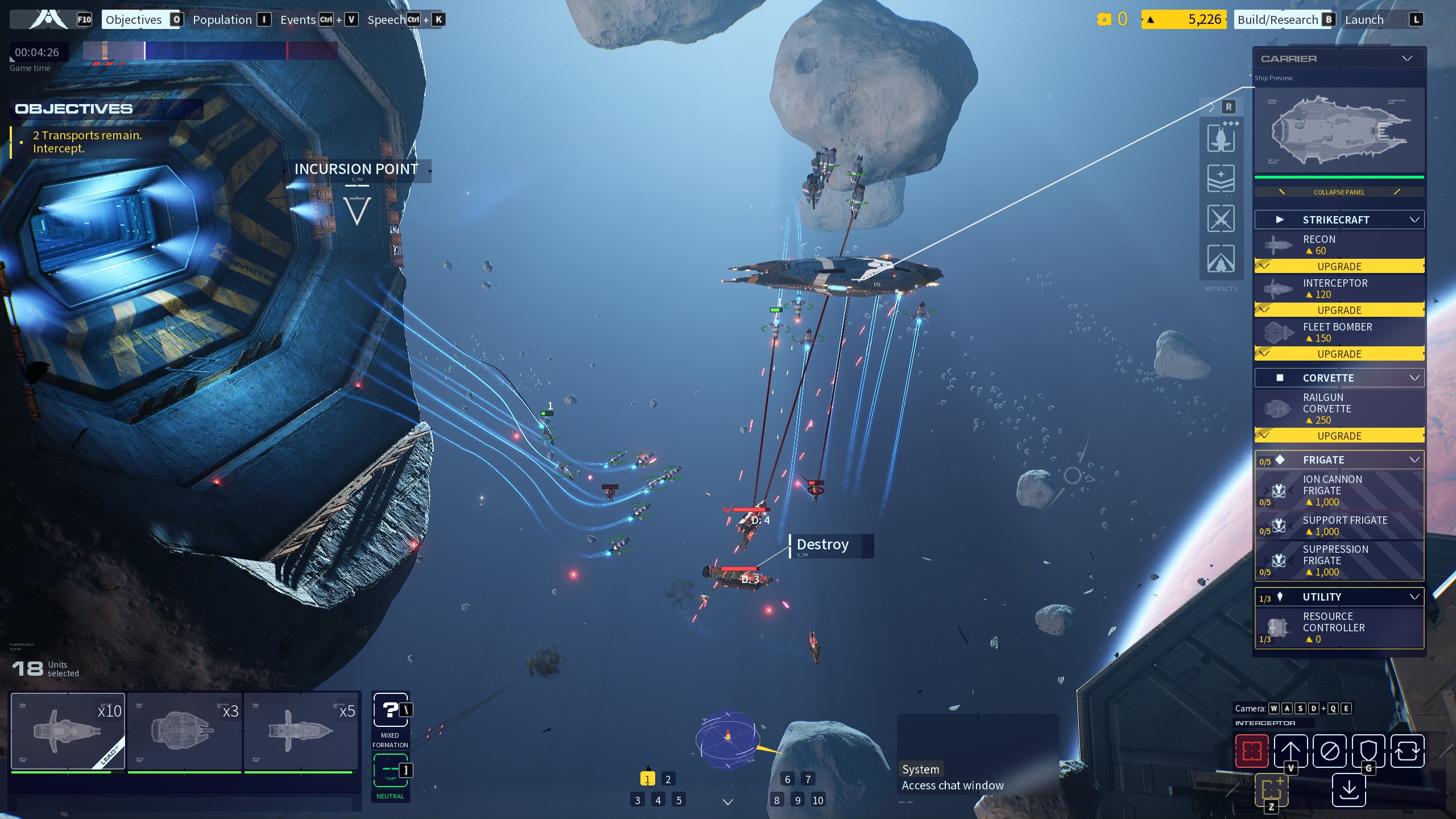
Despite ostensibly allowing you to play solo, it just doesn't make sense without a co-op buddy. But even with a co-pilot in tow, I just can't see the appeal. You get fewer options, less time and more threats. None of this really plays to Homeworld 3's strengths and I'd rather just dive into a co-op comp stomp in the skirmish mode. It's good that BBI has tried something new—it shouldn't be entirely beholden to the past—but this ain't it, I'm afraid.
Homeworld was such a formative game for me that it's hard to imagine anything knocking it off its pedestal. But Homeworld 3 does make it wobble. A lot. Watching dogfights in the canyons of a frozen moon or a formation of bombers boosting up the wall of an industrial complex—praying some of them survive the turret fire—is undeniably thrilling stuff. But whenever I had to sit through another terrible cutscene, babysit my capital ships or do another run of War Games, the wobbling ceased. So this isn't quite the Homeworld 3 I always dreamed of, but there are times where it gets pretty close.

